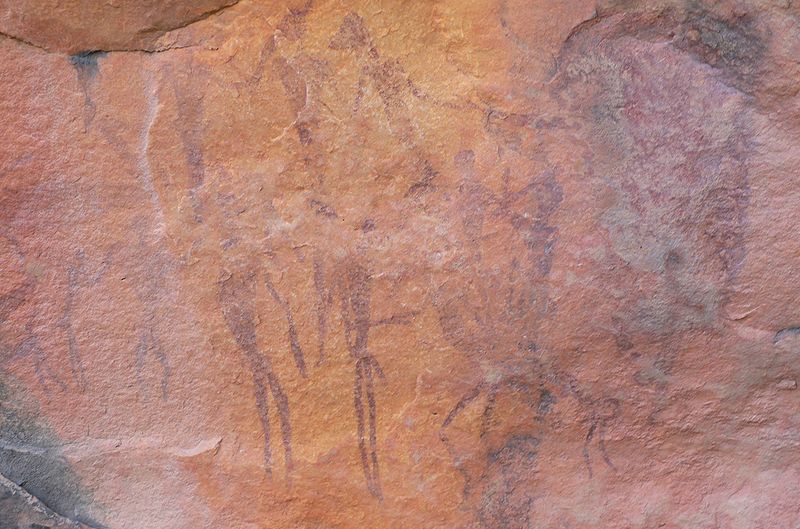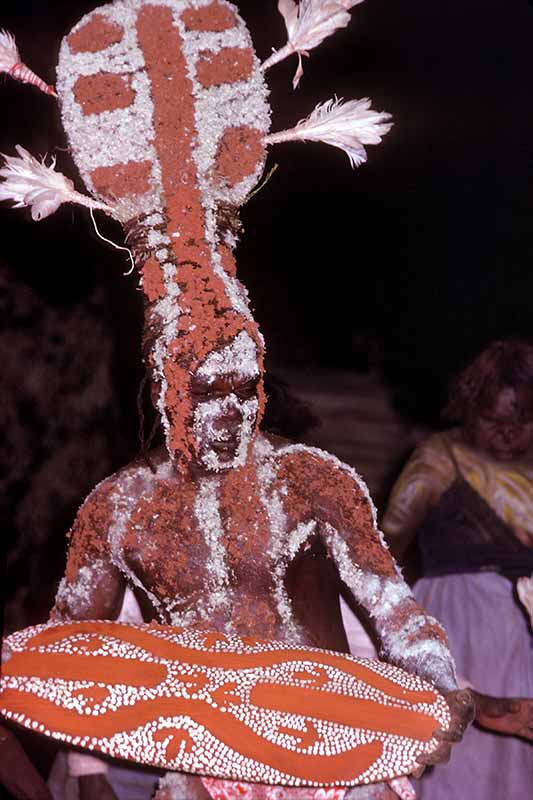Australian art= incorporates art made in Australia or about Australian subjects since European settlement in 1788, with the greatest strength in the 20th century.
This is an introduction and presentation on the vast world of traditional Aboriginal art. Australias art history and/or traditions varies from rock engravings, cave and tree bark paintings, symbolic and decorative designs that can be/were sacred to Australias ancestors.

Australia has a beautiful landscape that inspired a lot of people. But humans have been living in Australia for thousands of years, the Aboriginal and Torres Strait Islander people are the oldest known groups that have dedicated the artistic talents in them to their traditions, they´re artistic talents are incredibly inspiring and exciting.
-snake painting, Karen Taylor, Pitjanjatjari Aborigine
Their art and traditions are among the oldest and richest in human history. The designs, patterns and stories were taught to Indigenous Australians by their Ancestors and are reinforced and replicated through ritual, dance, song, body painting, rock engravings and paintings, and on domestic and ritual objects. Aboriginal and Torres Strait Islander art is as alive today as it was thousands of years ago. As in the ancient past, the art is inseparable from everyday life.
Contemporary art in Australia takes many forms just as it did many years ago. Despite significant change and diversity, the art continues to inspire and unite Australians and random people. The land – Australia and the relationship inhabitants have with it.
The Aboriginal and Torres Strait Islander art collection at the National Gallery of Australia comprises over 7500 works and is the largest in the world.

-from the National Gallery of Australia
The Aboriginal Memorial consists of 200 hollow log coffins from central Arnhem Land in the Northern Territory and is one of the most significant Indigenous works of art in the Gallery’s history. It was created in 1987–88 by some 43 Aboriginal artists from Ramingining and the surrounding area. Each pole represents a year of European occupation and together they stand as a memorial to all the Aboriginal and Torres Strait Islander people who lost their lives during the colonial occupation in Australia from 1788 to 1988.
The path through the installation represents the Glyde River in central Arnhem Land. The poles are located along the river according to their specific homeland.
Fun Facts:
· -Cave pictures of running people (people in action) mean/are interpreted as self portraits of fairy-like creatures who are supposed to live in rocks/hide-out places and only come out at night.

-Every painting/craving means something personal to the artist. An angel/mîmi/recording events of the day/diary/magical meanings. But usually the paintings/cravings are quite mysterious, - at least to us. What is sacred to them? –Western=Kangaroo red=blood – yellow=liver.
 -Cave paintings are the most common form of Aboriginal fixed art, but it was/is actually different regarding where in Australia you are.
-Cave paintings are the most common form of Aboriginal fixed art, but it was/is actually different regarding where in Australia you are.- Nuiti=headdress that is usually carried on shoulders. Very popular/important, leaders, festivals.
- Sacred corroboree called Derby (festival/ceremony) Western Austrealia – dances, songs, rythms, decorated bodies, headdresses.

- Baglin, Douglass and Barbara Mullins. 1970. Aboriginal Art of Australia. 10th puplication. Shepp Books, Hornsby.


No comments:
Post a Comment